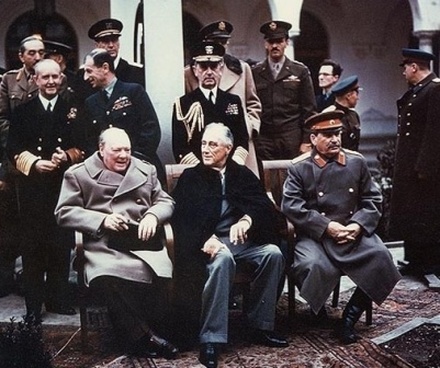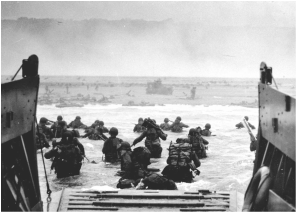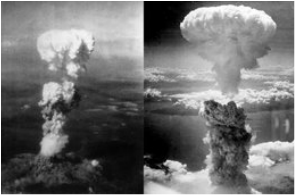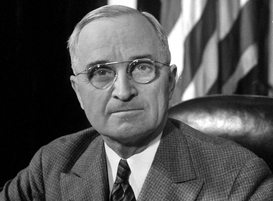Lesson Objectives
To identify how disagreements arising from the Second World War led to the Cold War
To identify how and why the relationship between the USA and USSR intensified in the years 1947-48
To identify the causes of the Berlin Blockade and its effects on relations between the superpowers
To discuss role played by various factors in the outbreak of the Cold War and evaluate the historiography on the origins of the Cold War
To identify how disagreements arising from the Second World War led to the Cold War
To identify how and why the relationship between the USA and USSR intensified in the years 1947-48
To identify the causes of the Berlin Blockade and its effects on relations between the superpowers
To discuss role played by various factors in the outbreak of the Cold War and evaluate the historiography on the origins of the Cold War
|
Tehran Conference
D-Day
Atomic bombs dropped on Japan-Hiroshima (left) and Nagasaki (right)
|
Breakdown of the 'Grand Alliance'January 1942: Allies issued a joint 'Declaration by United Nations'- military union between the USA, UK and USSR (the "Grand Alliance')
1942-1943: the UK and USA decide to invade North Africa and Italy first, delays made Stalin suspicious- believed the Allies wanted the USSR to be weakened November 1943: Tehran Conference, Persia/Iran- Attended by Joseph Stalin (USSR), Winston Churchill (UK) and Franklin Roosevelt (USA) June 6th 1944: D-Day in France, 228 Axis divisions on the eastern front compared to 61 divisions in Western Europe February 1945: Yalta Conference, Ukraine- Attended by Joseph Stalin (USSR), Winston Churchill (UK) and Franklin Roosevelt (USA) 7 May 1945: Germany signs a unconditional surrender treaty, The German Instrument of Surrender July 1945: Potsdam Conference, Germany- Attended by Joseph Stalin (USSR), Harry S Truman (USA) and Clement Atlee (UK) 6 August 1945: first atomic bomb dropped on Hiroshima 9 August 1945: second atomic bombed dropped on Nagasaki February 1946: US diplomat in Moscow, George F Kennan, sent a telegram to the US State Department describing Soviet foreign policy- shape the policy of 'containment' 5 March 1946: former British Prime Minister, Winston Churchill, gave a speech at Westminster College in Fulton, Missouri with President Harry S Truman 4 September 1951: Treaty of San Francisco |
Confrontation to ContaminationPresident Harry S. Truman
|
Lorem ipsum dolor sit amet, consectetur adipiscing elit, sed do eiusmod tempor incididunt ut labore et dolore magna aliqua. Ut enim ad minim veniam, quis nostrud exercitation ullamco laboris nisi ut aliquip ex ea commodo consequat. Duis aute irure dolor in reprehenderit in voluptate velit esse cillum dolore eu fugiat nulla pariatur. Excepteur sint occaecat cupidatat non proident, sunt in culpa qui officia deserunt mollit anim id est laborum.
|
Berlin Blockade
|
Lorem ipsum dolor sit amet, consectetur adipiscing elit, sed do eiusmod tempor incididunt ut labore et dolore magna aliqua. Ut enim ad minim veniam, quis nostrud exercitation ullamco laboris nisi ut aliquip ex ea commodo consequat. Duis aute irure dolor in reprehenderit in voluptate velit esse cillum dolore eu fugiat nulla pariatur. Excepteur sint occaecat cupidatat non proident, sunt in culpa qui officia deserunt mollit anim id est laborum.
|
|




